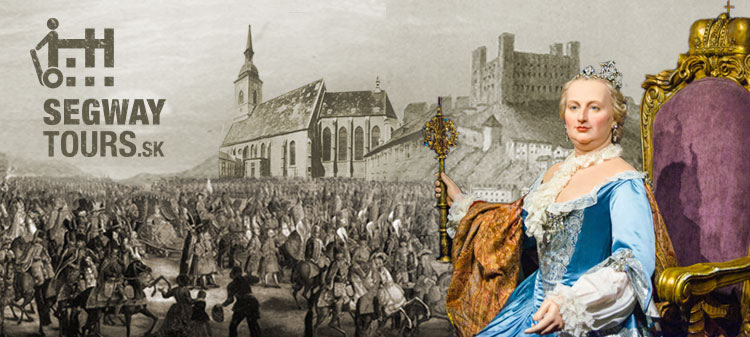
The beginnings of Christianity from the Middle Ages to Bratislava of today
120 minutes - 50€
Travel with us 1000 years back to the Middle Ages, when Bratislava was called Prešpork, when Maria Theresa ruled, or when Spanish conquistadors spread Christianity throughout Europe. We will show you the most beautiful churches, chapels and monasteries you can find in our city, which breathe a thousand year old history and are covered with a veil of secrecy, wars, riches, and intrigues, which ruled the world at the time. We will take a loon and explain how they originate, why was it here, and who was behind these majestic buildings and plans.
To book other tours, as well as possible time changes please contact us as soon as possible
You'll see:
Franciscan church of the Lord’s Annunciation
The Hungarian king Ladislav IV. Kumánsky is considered its founder, who ordered to have it built in memory of the victory over the Czech king Přemysl Otakar II.
The Chapter next to the Church of the Most Holy Savior
Circumstances related to the growing number of Evangelicals of German nationality in Bratislava between 1636 - 1638 compelled the building of a shrine for the needs of believers.
Church of Loreto Virgin Mary
In the second half of the 17th century, religious sisters settled in Prešpork (in the first city of then Hungaria) and immediately after that began to develop their activities.
The Church of St. John of Matha (Tinitarian church)
After acquiring a vast space of the old cemetery of St. Michal, between 1717 and 1725 a central two-tower church with a monastery was built in the Župné Square (Kohlmarkt, i.e. Coal market at the time).
The Church of St. Stephen
The foundation stone of the monastery was laid down on 17th December 1708. In 1727 the monastery was expanded to the Goat Street and Palffy’s Gardens.
The Dome of St. Martin
The largest, oldest and largest and most pretentious church in Bratislava. At the beginning of its existence there was the pope’s approval of relocating the provost church of the Most Holy Savior from the castle to the extramural settlement. In 1221 the Pope Innocent III. accepted the request of the Hungarian king Imrich.